Recent Articles
Popular Makes
Body Types
2021 GMC Yukon vs. 2021 Ford Expedition
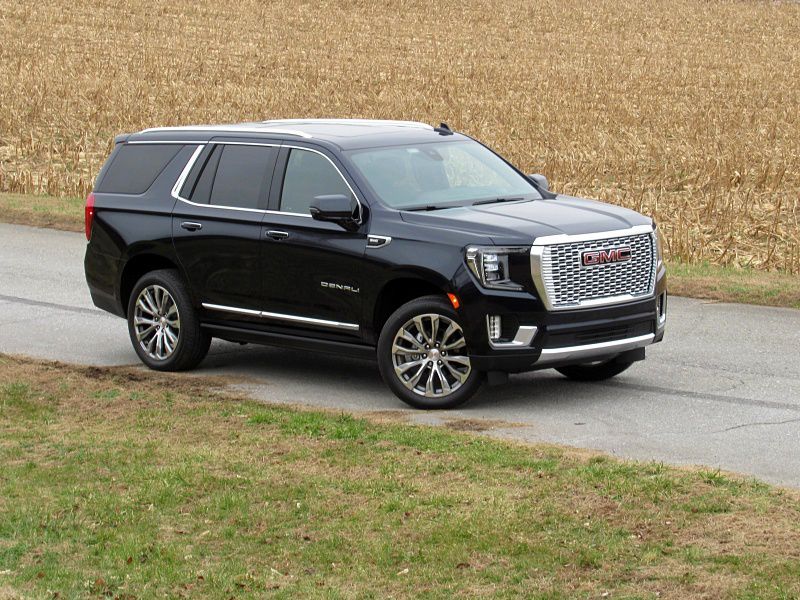
2021 GMC Yukon Denali ・ Photo by Brady Holt
It was a strange dynamic: For years, America’s most popular full-size SUVs — the Chevrolet Tahoe and its GMC Yukon twin — could barely fit in three rows of seats. Their third rows were cramped and offered minimal cargo room behind them. The most family-friendly competitor was the roomier Ford Expedition, which broadened its appeal beyond mere interior space during a 2018 redesign. It became easily the class leader.
But now the Tahoe and Yukon have been redesigned, too. Due to a growth spurt and a more sophisticated suspension design, they’ve become even roomier than the Expedition. Does that mean the Ford has been outclassed, or does it have other strengths to retain its place as a class leader? Here’s what we learned from testing a 2021 GMC Yukon and 2021 Ford Expedition.
Pricing
The 2021 Ford Expedition starts at $49,995 for a newly introduced XL STX trim level, which undercuts the base 2021 GMC Yukon SLE’s $50,700. However, the Yukon wins this category for offering more features for the money. Most notably, the Expedition XL STX strips out its third-row seat, which reappears on the $52,810 XLT model.
Moving up the trim ladder, leather upholstery arrives on the $57,800 Yukon SLT and $61,575 Expedition Limited. And the extra-luxe Yukon Denali starts at $68,400 compared with the Expedition’s equivalent Platinum model at $73,775. Both SUVs are available with nearly every imaginable luxury, but the GMC tends to be the better bargain. We’d encourage you to get price quotes from local dealers, in case you can find a bigger discount on the older Expedition than the freshly redesigned Yukon, but the Yukon is the more promising value.

Photo by Brady Holt
Exterior Design
There are only so many ways to style a big box, but Ford and GMC have chosen two different ones. The Yukon is angular and brash, while the Expedition is rounded-off at the edges for a gentler approach.
Where the GMC has edgy C-shaped headlights and taillights, the Ford has big rectangles with rounded corners. While the Yukon’s front end is straight up and down, the Expedition’s leans back. And while the Yukon has a massive grille — especially on our heavily chromed Denali test vehicle — the Expedition’s is smaller and less imposing. The winner will depend on whether you favor handsomely conservative or boldly new. You can also consider the 2021 Chevrolet Tahoe, which puts a sportier front end on the same Yukon body.
Tie
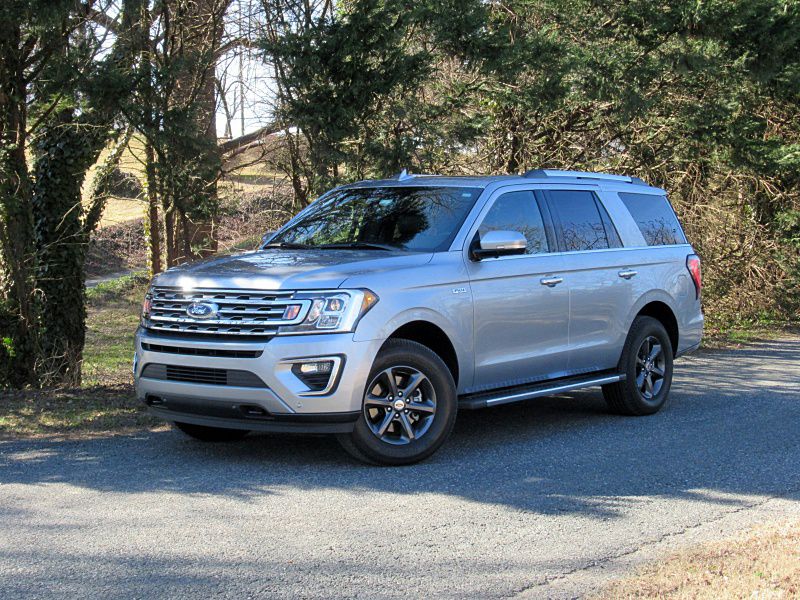
Photo by Brady Holt
Interior Design
Inside, the new Yukon dazzles more than the Expedition. That’s particularly true on the Denali, which has richer interior materials and a revised dashboard layout compared with the rest of the Yukon line. Our test vehicle included richly textured woods and metals, along with rich leather upholstery on the seats, door panels, and dashboard. It also has a big 10.2-inch touchscreen. This is practically a Cadillac Escalade inside.
The Yukon does hide some cheap plastics where you’re less likely to look, but the Expedition is less stylish and opulent. Its dashboard looks more like an F-150 pickup’s than a Lincoln Navigator’s. Some people will prefer the Ford’s more utilitarian look of chunky shapes and big dashboard vents, but these are expensive luxury vehicles, and the Yukon’s interior is more deserving of its lofty price tag. Also, while the Ford’s 8-inch touchscreen would be a decent size in a sedan, it gets a little lost in the Expedition’s wide dashboard. A bigger Expedition touchscreen is expected next year, but the Yukon wins for now.
GMC Yukon
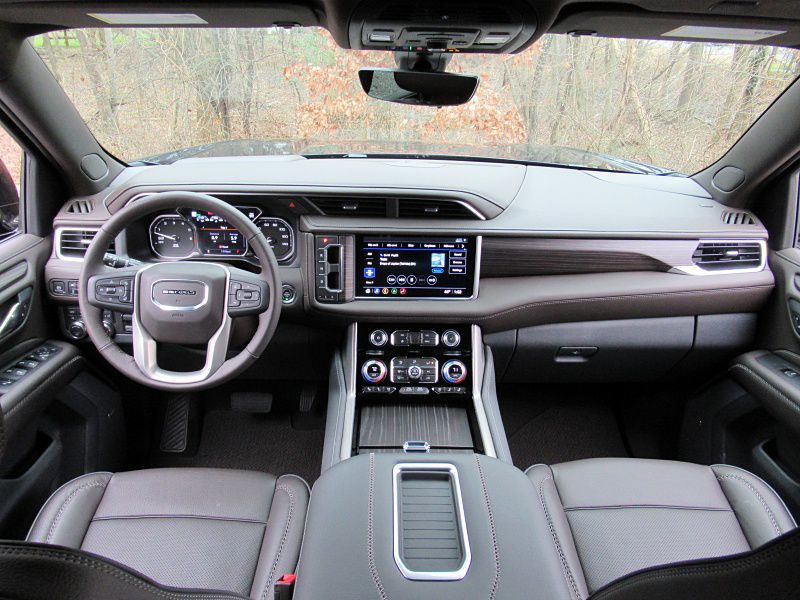
Photo by Brady Holt
Interior Space
Ford has been handily winning the interior space battle for nearly 20 years, ever since the 2003 Expedition switched to a space-saving independent rear suspension. But for 2021, the GMC Yukon and Chevrolet Tahoe ditched their solid rear axle in favor of the same suspension type, and also grew several inches longer. The result is that GM can finally match the Ford for passenger space in this segment and now offers more room for cargo.
The 2020 Yukon had 15.3 cubic feet of cargo space behind its third-row seat, 51.7 cubic feet behind its second row, and 94.7 cubic behind its front seats, lagging the Expedition’s figures of 20.9, 63.6, and 104.6 cubic feet, respectively. The 2021 Yukon, meanwhile, manages 25.5 cubic feet behind the third row, 72.6 cubic feet behind its second row, and 122.9 cubic feet behind its front seats. Both our test vehicles included power-folding third-row seats and remote releases for the second-row seats, but the Yukon’s mechanism worked faster than the Expedition’s. The Expedition claws back a bit with a higher towing capacity: 9,300 lbs to the Yukon’s 8,400 lbs.
GMC Yukon
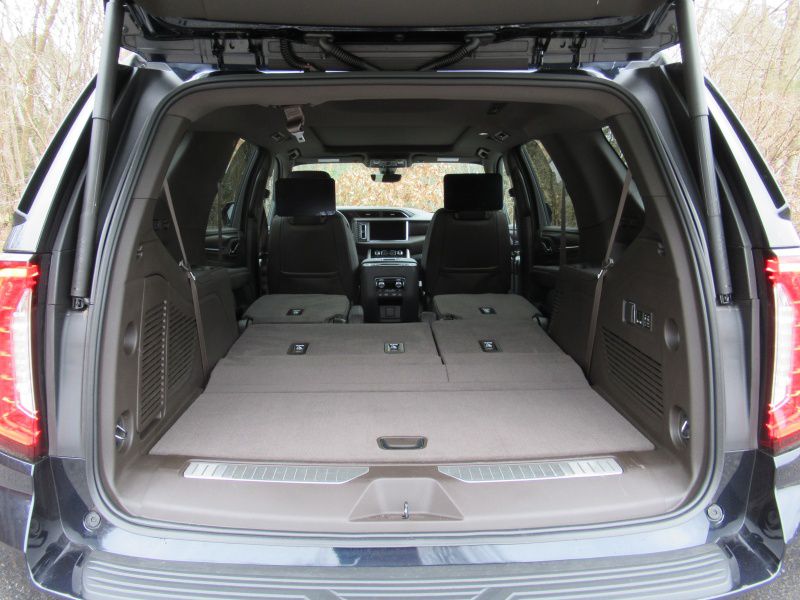
Photo by Brady Holt
Interior Comfort
The Expedition and Yukon are both comfortable places to spend time, with generous space and well-shaped seats. But we found the Expedition to be a little more comfortable overall.
The Yukon has firm, supportive front seats. The Expedition’s are cushier and more welcoming, yet they also retain their support over time. Both SUVs have a choice of bench seats or captain’s chairs in the second row, and three-passenger bench seats make up their third rows. Even adults will be comfortable in both vehicles’ third-row seats, which is a big improvement over past Yukons. The Expedition has bigger third-row windows for a better view out, while the Yukon’s second-row seats pivot out of the way better for easier third-row access.
Ford Expedition
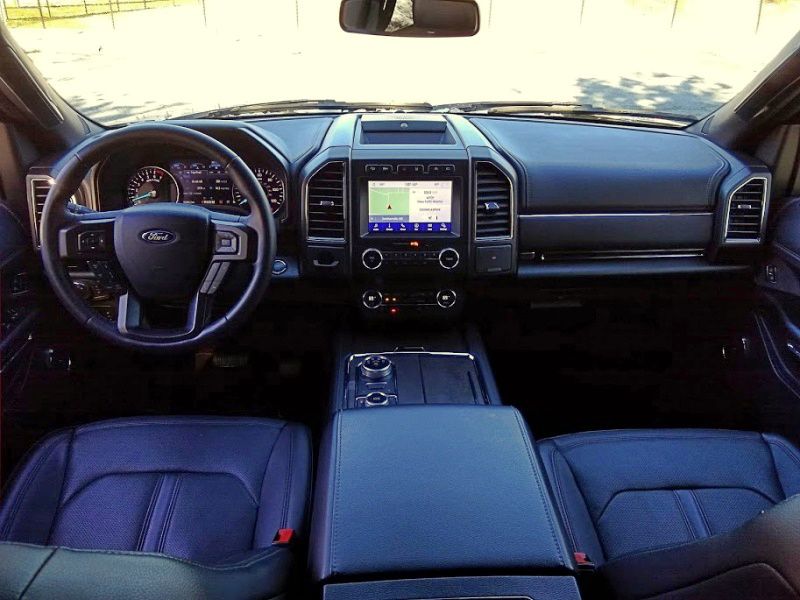
Photo by Brady Holt
Powertrains
Ford has invested heavily in its EcoBoost line of turbocharged engines, and the Expedition uses a 3.5-liter V6 it shares with the F-150 pickup truck. This turbo is tuned to make 375 horsepower and 470 lb-ft of torque on most Expeditions, including our test vehicle, and 400 hp and 480 lb-ft on the top Platinum model. It provides vigorous acceleration, a rich but not overpowering engine note, and crossover-rivaling EPA ratings: up to 17 mpg in the city and 23 mpg on the highway.
Most Yukons have a 5.3-liter V8 engine with 355 horsepower and 383 lb-ft of torque, and our Denali test vehicle upgrades to a 6.2-liter V8 with 420 hp and 460 lb-ft of torque. But even the Denali doesn’t have any more vigor than the six-cylinder Ford, and its EPA ratings max out at 15 mpg city and 20 mpg highway on premium fuel. The 5.3-liter uses regular, but its 16 mpg city/20 mpg highway still trails the Expedition. GMC does offer a six-cylinder turbodiesel with 270 hp and 460 lb-ft of torque, and it manages an outstanding 21 mpg city/27 mpg highway, but the Expedition otherwise wins easily here.
Ford Expedition
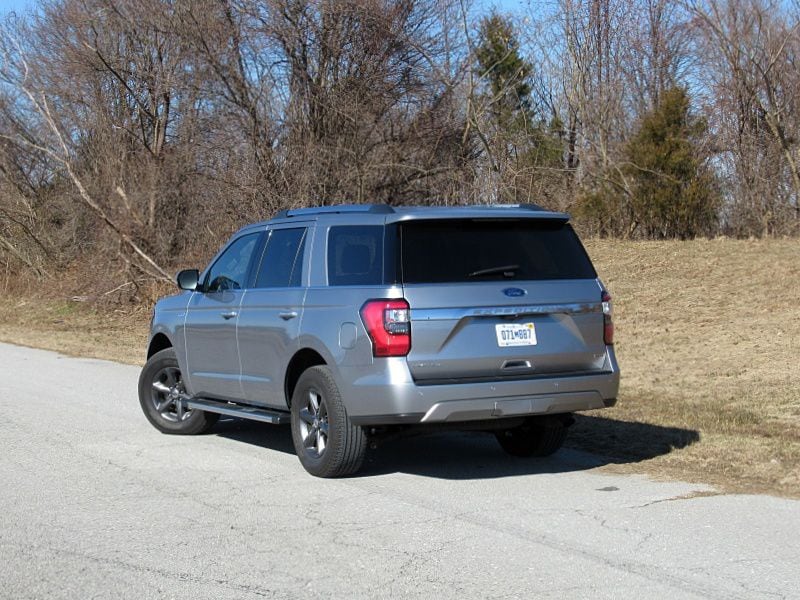
Photo by Brady Holt
Ride and Handling
Even though the Yukon is newer than the Expedition, we didn’t feel an advantage in its ride and handling. Both giant SUVs handled with commendable composure for their bulk, even if you skip their selectable “sport” driving modes. Firm, responsive steering is more confidence-inspiring than the looseness that once plagued big truck-based SUVs. They can still feel intimidating if you’re used to smaller vehicles, but the learning curve has gotten much less steep.
At the same time, neither vehicle has the extra-cushy ride some folks might expect from a big luxury vehicle. If you’re expecting a pickup truck, you’ll be pleasantly surprised. If you’re expecting a Mercedes-Benz or even a Honda, you’ll find them bumpy. The Yukon was the stiffer of our two test vehicles, but that’s largely due to how they were configured: the GMC with optional 22-inch wheels and the Ford with more forgiving 18-inchers. Overall, these two vehicles are pretty similar to drive, so we’ll call this category a tie.
Tie
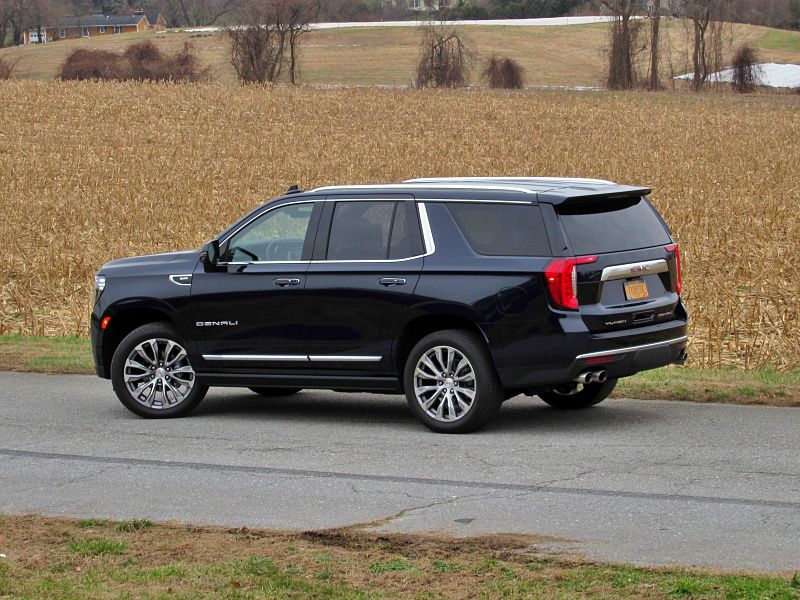
Photo by Brady Holt
Safety
The redesigned 2021 GMC Yukon and 2021 Chevrolet Tahoe haven’t been crash-tested yet. Fortunately, the Yukon is full of technology to help keep you from needing that type of protection. A forward-collision warning with automatic emergency braking and pedestrian-detection capability is now standard equipment on all Yukons. And you can also upgrade even the base model with blind-spot monitoring with a rear cross-traffic alert, and a lane-departure warning with lane-keep assist.
The 2021 Ford Expedition has all of the above as standard equipment. However, it also costs more, which more than offsets the expense of adding the option on your Yukon. The GMC also has optional safety features that the Ford doesn’t offer: a rearview camera mirror for improved visibility and a vibrating Safety Alert Seat. And many GM owners swear by the OnStar collision-alert system. Balancing the Yukon’s extra features, the Expedition has proven itself in a collision with a top five-star score from the National Highway Traffic Safety Administration.
Tie
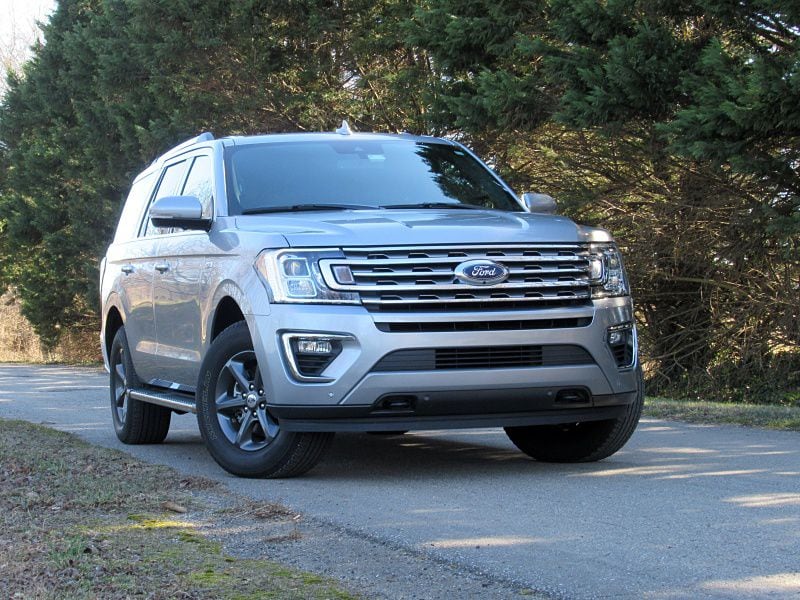
Photo by Brady Holt
Final Thoughts
It’s rarely good news for a class leader when a top competitor gets a full redesign. Sure enough, the 2021 Ford Expedition slips behind this roomier, more luxuriously finished, less-expensive rival. The 2021 GMC Yukon (and 2021 Chevrolet Tahoe) make impressive strides forward, and they do it without inflating their price tags.
There’s still a lot to like about the Expedition. Its engine is a gem — powerful, capable, and fuel-efficient. We like its front seats more than the Yukon’s. Some customers are bound to prefer its styling. And you might find a bigger discount on the Expedition, offsetting the Yukon’s price advantage. Still, it’s now GM that makes the best full-size SUV in town.
GMC Yukon
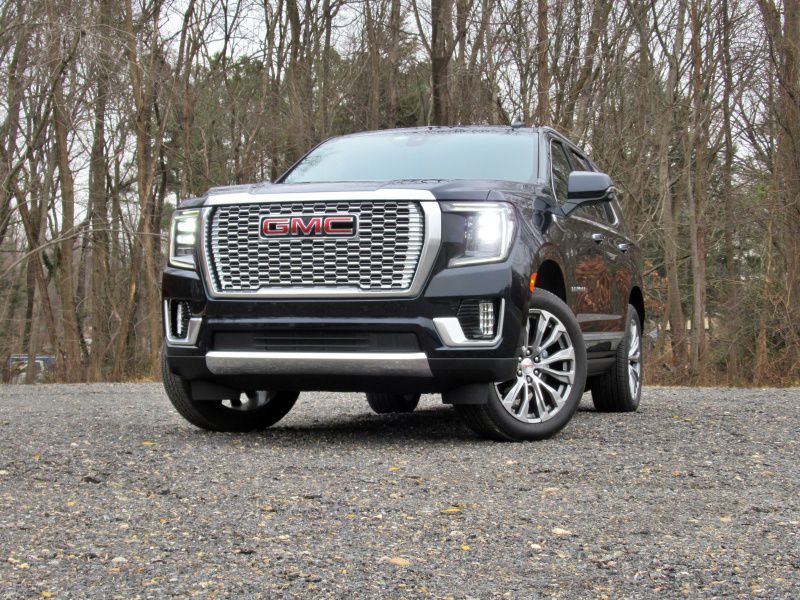
Photo by Brady Holt